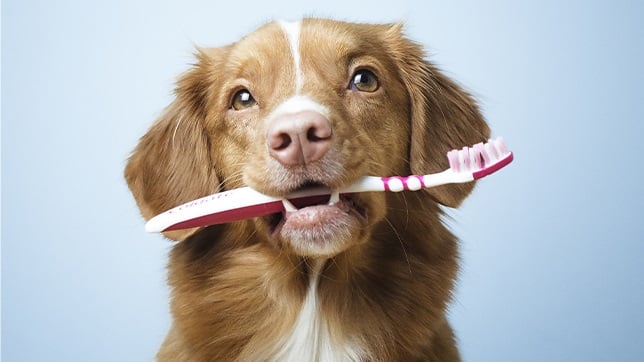Why Your Pet’s Dental Health Matters More Than You Think
When we think about keeping our pets healthy, we often focus on vaccinations, nutrition, and parasite prevention. But did you know that dental health is just as vital? Just like in people, your pet’s oral health plays a major role in their overall wellbeing. And poor dental hygiene can do more damage than just causing bad breath.
The Hidden Dangers of Dental Disease
Dogs and cats are prone to developing dental disease, especially as they age. It often starts with plaque buildup, which hardens into tartar, leading to gum inflammation (gingivitis) and eventually periodontal disease.
What many pet owners don’t realise is that this problem doesn’t stay confined to the mouth. The gums are rich in blood vessels, making it easy for bacteria to enter the bloodstream. From there, these bacteria can travel to vital organs—such as the heart, liver, and kidneys—causing inflammation and even long-term damage.
So yes, those few bad teeth may be silently affecting your pet’s organ function and quality of life.
Why Prioritise Dental Health?
Keeping your pet’s teeth clean isn’t just about fresh breath (although that’s a bonus!). Here are some reasons why dental care should be high on your priority list:
- Improved comfort – Dental disease causes pain, discomfort, and even difficulty eating.
- Better quality of life – Pets with healthy mouths are happier, more active, and maintain a healthier weight.
- Prevention of complications – Untreated dental issues can lead to infections, tooth loss, weakened jawbones, and systemic illness.
- No more “dog breath” – Chronic bad breath (halitosis) is a clear sign that something’s not right.
Signs of Dental Trouble
Keep an eye out for the following symptoms, which may indicate dental disease in your pet:
- Yellow or brown tartar buildup on teeth
- Red, swollen gums (gingivitis)
- Receding gumlines
- Bleeding when chewing or eating
- Bad breath (halitosis)
- Drooling or messy fur around the mouth
- Reluctance to eat or chewing only on one side
- Weight loss
Who’s Most at Risk?
While any pet can develop dental disease, small breed dogs are particularly prone. They often don’t generate as much mechanical cleaning when chewing, especially if they eat mostly soft food. Older pets are also more susceptible. Studies suggest that up to 75% of small breed dogs show signs of dental disease by just two years of age.
How to Keep Your Pet’s Teeth Healthy
The good news? Dental disease is largely preventable with the right care. Here’s what you can do:
- Feed a high-quality pelleted diet – The crunch helps naturally clean teeth.
- Use dental chews – Choose vet-recommended options for effectiveness.
- Brush their teeth –Use a pet-specific toothbrush and toothpaste.
- Schedule routine dental cleanings – Performed under anaesthesia by your vet.
- Ask your vet about approved dental products – There are rinses, gels, and water additives available.
What Happens During a Professional Dental Cleaning?
A dental procedure at your veterinary clinic involves several steps:
- Oral exam – Your vet will assess the condition of your pet’s teeth and gums.
- Risk assessment – A full clinical exam (and blood tests for pets over 7 years) helps determine anaesthetic safety.
- Anaesthesia – This ensures a stress-free and thorough cleaning.
- Scaling and polishing – Tartar is removed, and the teeth are polished to reduce future buildup.
- Extractions (if needed) – Severely damaged or infected teeth may be removed.
- Recovery – Most pets go home the same day with medication and aftercare instructions.
The Takeaway
Dental health isn’t just a cosmetic concern—it’s a critical part of your pet’s overall health. By being proactive, you can help your furry friend avoid pain, illness, and even life-threatening complications.
If you’re unsure about your pet’s dental health, book a dental check-up with your vet. It’s never too early—or too late—to start caring for their smile.

